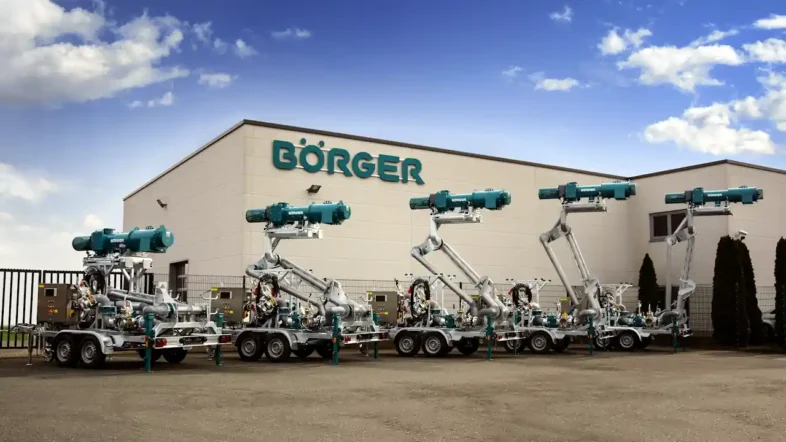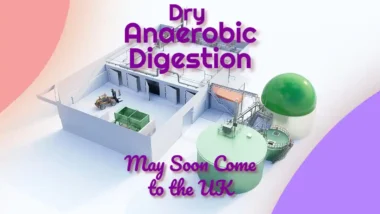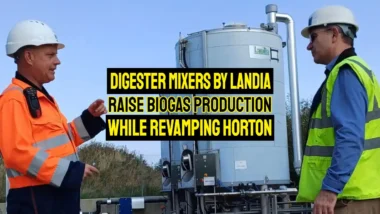Börger has announced an important addition to its popular BioSelect slurry separation equipment range with a mobile Powerlift version that follows on from the financial shock of the new Defra slurry separator guidance issued in October 2023. Guidance that unfortunately imposes more costs on slurry management from now onward.
The new mobile Slurry Separation Unit will enable:
- slurry separation equipment hire and
- use of one separator unit across multiple sites to reduce the added cost burden of the new Defra requirements.
It is hoped that farm businesses that have not yet invested in a slurry separator can avoid the cost of purchasing a separator unit outright and adopt a policy of hire, or share, instead.
This might not get rid of the need for a separate receiving pit, covered storage, and an impermeable base for the storage area, but farms might be able to avoid some of the high costs that come with these by processing manure slurries at the slurry lagoon site and loading and transporting the separated solids right away.
We anticipate a much more significant cost reduction when, by using the BioSelect slurry separation mobile unit's built-in ability to discharge at a height of more than 4.30m, the dewatered slurry is transported via a dumper or truck to a location where Defra guidance-compliant storage under cover and on an impermeable base is already available.
Intensifying the use of this equipment and introducing the possibility of hiring it only when needed is an opportunity that we welcome.
Read on for the new product in the press release from Börger:
Pree Release 12 January 2024:
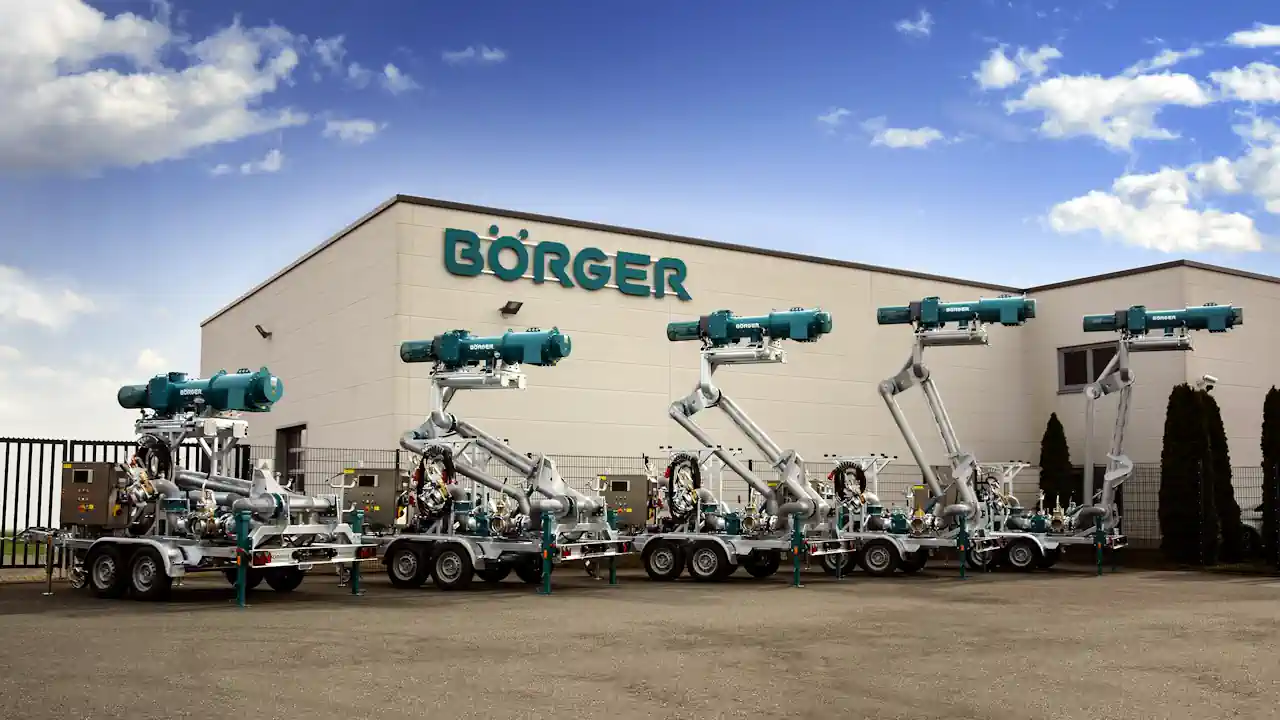
Powerlift performance from Börger’s super strong mobile separator
Börger’s BioSelect™, which is designed for the easy and highly effective separation of slurry at farms and biogas/AD plants, is now available as a tailored mobile unit.
Suitable for a car or truck trailer, the new Powerlift™ Separator can be built (capacities between 25 m³/h and 150 m³/h), to suit a specific application(s).
The entire mobile set-up, including:
- the feed pump,
- macerator,
- liquid-phase pump,
- control technology, and
- separator unit.
, is all designed and manufactured in one compact unit by Börger.
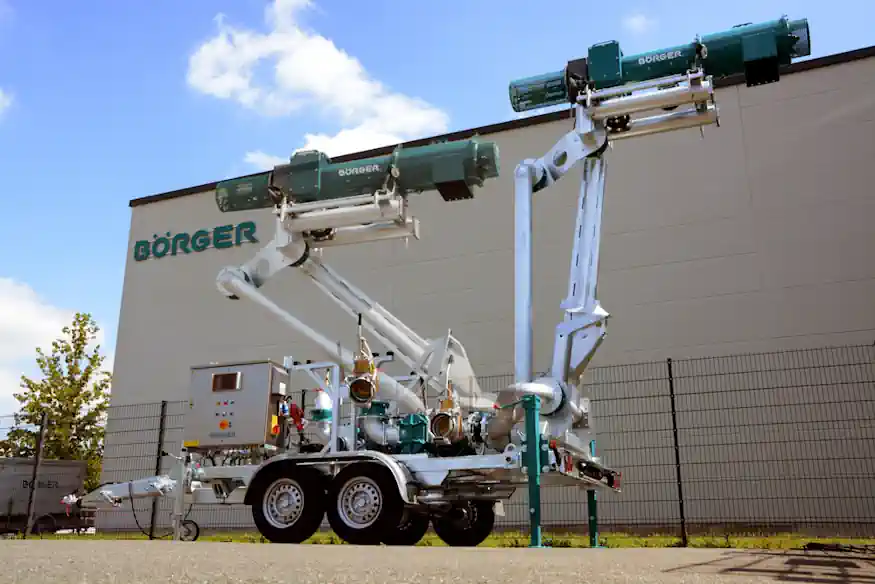
The Powerlift™ can be extended hydraulically to a discharge height of more than 4.30 m, so that even large dump trucks can be filled easily.
The Börger rotary lobe pump (benefitting from maintenance-in-place) feeds the BioSelect, and at the same time, sucks the medium to be separated through the macerator (a Börger Multi-Chopper), which then shreds the fibres, depositing impurities into the debris collector.
Achieving Dry Solids (DS) content up to 38%, the Börger Separator is load-triggered, while the feed pump ensures that volumes do not exceed capacity.
The high-density solids discharge pump determines the degree of thickness, so the user can, for example, thicken 4% dissolved solids (DS) content liquid into 12% DS, to make it suitable for tanker transport.
Likewise, liquid manure and fermentation residue can be thickened to 22% DS, without making any mechanical adjustments to the machine.
Borger UK – Tel: 1902 798 977 – www.boerger.com
Press Release Ends
More on the New DEFRA Guidance on Farm Slurry Separation Equipment
In October last year, the UK's Department for Environment, Food, & Rural Affairs (DEFRA) issued new guidance that emphasizes the significance of slurry separators on farms.
This development is crucial for the agriculture sector, particularly for those involved in managing organic waste slurries.
The guidelines aim to mitigate the environmental risks associated with farm slurry pollution and underline the importance of efficient slurry separation technology.
Key Aspects of the New Guidance
DEFRA's guidelines highlight several mandatory practices for those using mechanical slurry separators:
- Adequate slurry storage is essential, independent of the separator's functionality.
- Slurry must be collected in a reception pit before separation, sized to hold two days' worth of slurry, including rainfall.
- Installation of separators may require a gantry with safe access features.
- The stackable material produced by the separator must be stored on an impermeable surface under an impermeable cover to prevent leaching and re-slurrification.
The regulations also specify that stackable material must not be kept within 10 meters of inland or coastal waters and 50 meters of any spring, well, or borehole.
Implications for Agricultural Businesses
The introduction of these guidelines represents a significant shift in the management of slurry on farms.
Previously, the main advantage of slurry separators was the reduction in the required investment for slurry storage, as well as the ability to produce stackable material for easier transport and field application.
However, under the new guidance, these benefits are somewhat diminished for stationary Bioselect slurry separators, as the requirement for additional storage and covering of solid material increases both capital and operational costs.
Slurry Separation – What Farmers Need to Know
Farmers considering the implementation of slurry separators must now factor in the additional expenses associated with compliance. This includes the need for covered storage of the solid material and adherence to stricter environmental safeguards.
The guidance also impacts those applying for a Slurry Infrastructure Grant, requiring recalculations and specific considerations in the application process.
Transitioning to Efficient Slurry Management
Despite these new challenges, efficient slurry separation for sustainable slurry management remains a crucial aspect of modern farming.
Innovative solutions like Börger’s BioSelect mobile separator unit are increasingly relevant in this context. This tailored mobile unit is designed for the effective separation of slurry at farms and biogas/AD plants. It boasts a capacity ranging between 25 m³/h and 150 m³/h and includes many features.
Not least is the fact of mobility, and that is well-known to Börger!
The Börger Powerlift can be extended hydraulically to a discharge height of over 4.30 m, accommodating large dump trucks. It also features a rotary lobe pump and a Multi-Chopper macerator, enhancing the separation process and ensuring a high Dry Solids (DS) content of up to 38%.
In light of DEFRA's new guidelines, products like the Börger BioSelect Mobile Separator have become even more vital for farms to manage slurry efficiently while adhering to environmental regulations.
For more detailed insights into the DEFRA guidelines, you can read more at Douglas Green Consulting

